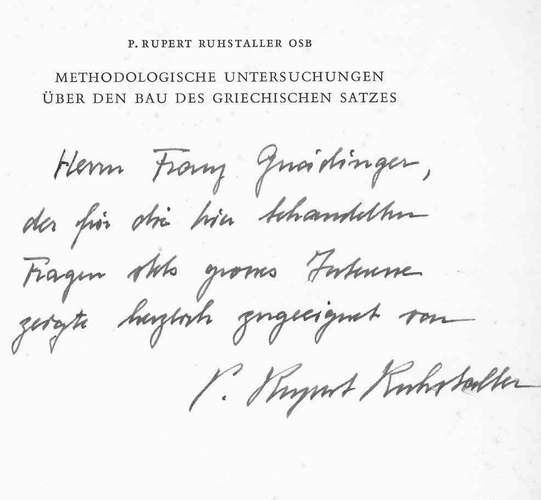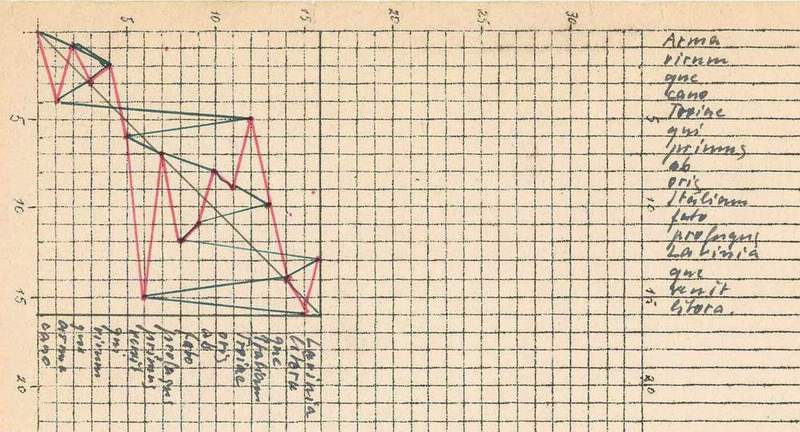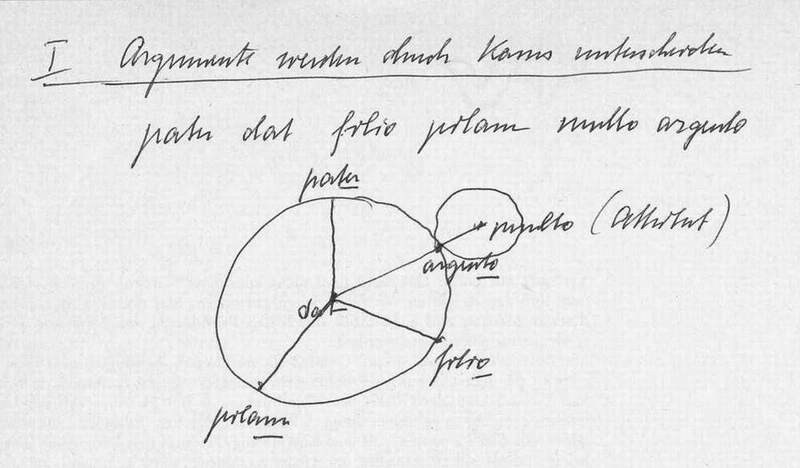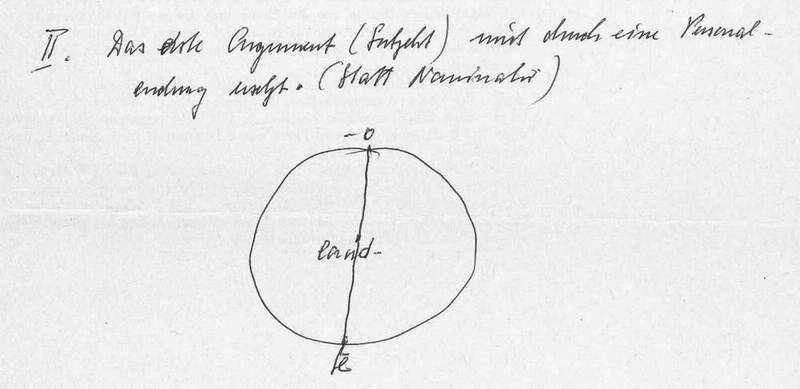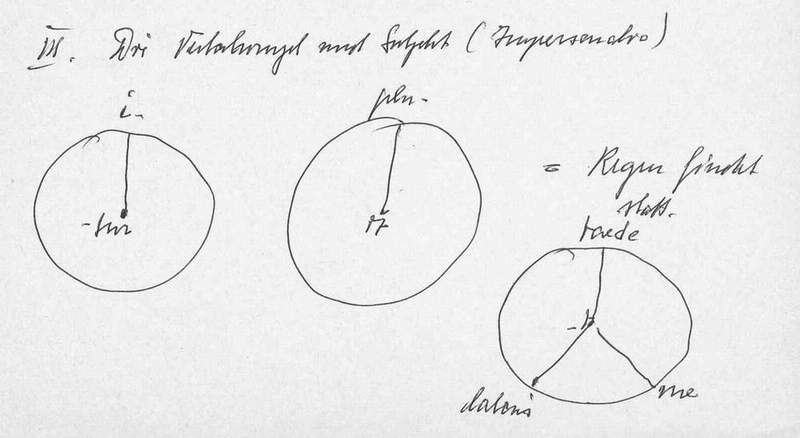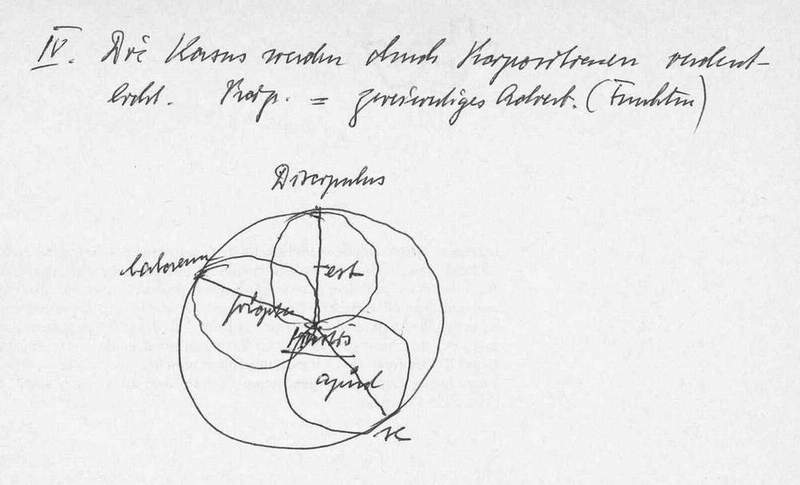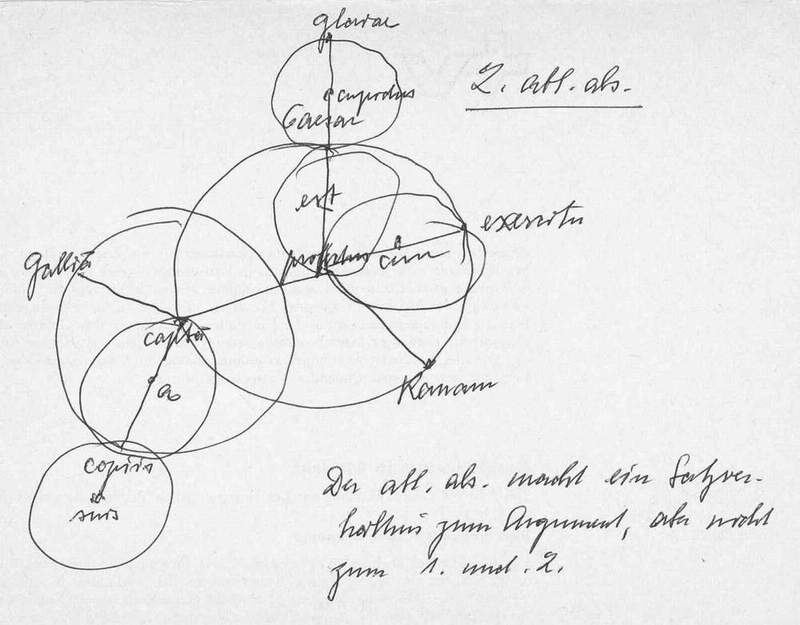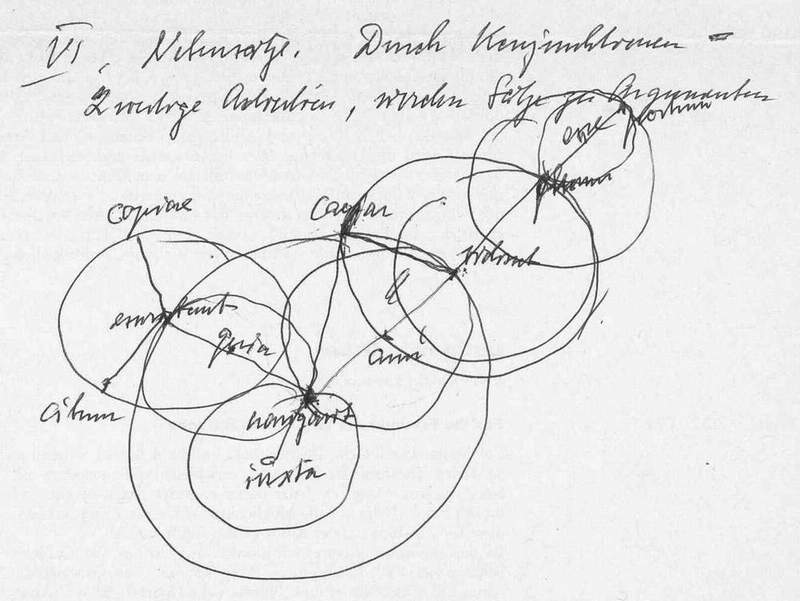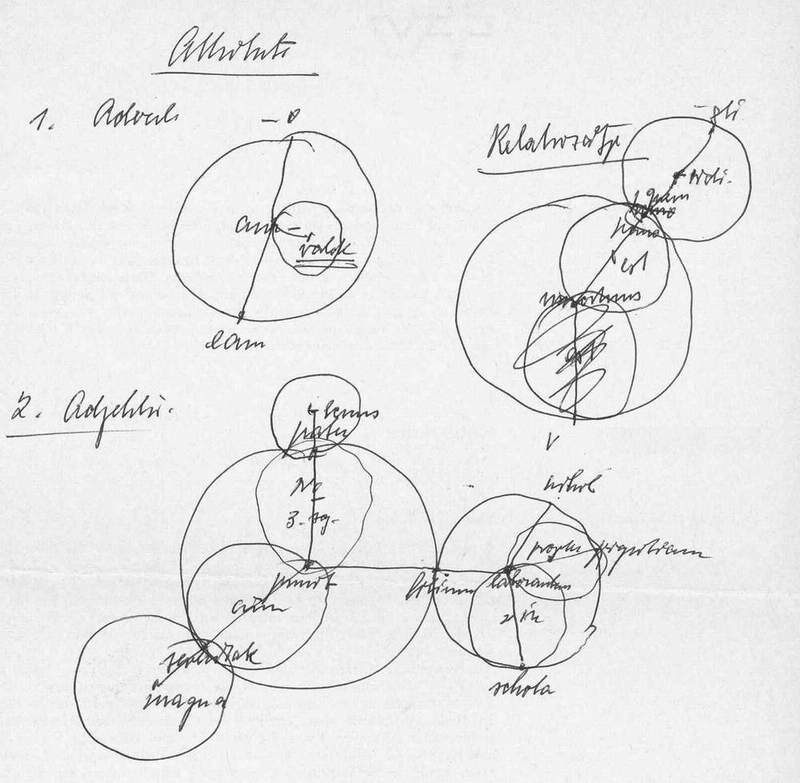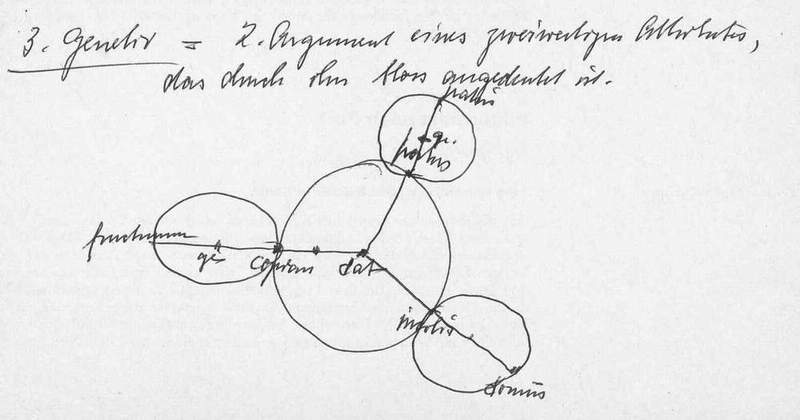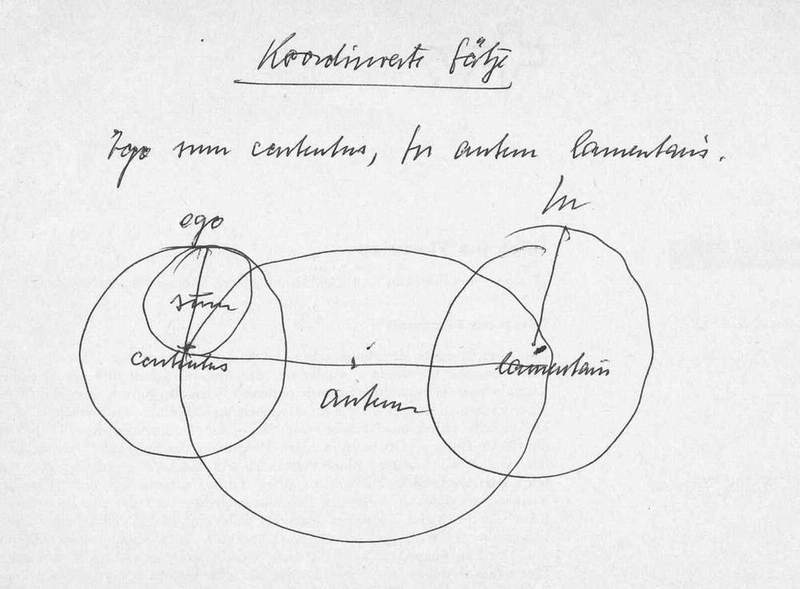Pater Rupert Ruhstaller’s grammar / © 1999-2001 by Franz
Gnaedinger, Zurich, fg(a)seshat.ch, fgn(a)bluemail.ch / www.seshat.ch
BUDDING CIRCLES The grammar
of Pater Rupert Ruhstaller OSB
The late Pater Rupert Ruhstaller OSB (Ordo Sancti Benedicti), a monk and teacher of Latin, Greek and philosophy at the monastery school of Einsiedeln, wrote his dissertation on the structure of the Greek sentence. Rupert Ruhstaller developed a new grammar that makes use of so-called functors and arguments, and may be visualized by means of budding circles. I spent many hours in his modest cell, and was amazed by his ideas - so different from what he had experienced at school. He explained his grammar to me using examples. I hardly understood the linguistic terms, but I understood his drawings well. An example: pater filio pilam dat: dat is the functor in the center of a circle, while pater, filio and pilam are arguments written on the circumference of the circle. If the ball was expensive, pilam is the center of a new circle on whose circumference are written the words multo argento. Pater Ruhstaller was able, without hesitation, to apply a pattern of circles to any Latin sentence, no matter how complicated. He also developed a system for describing the natural order of a sentence, beginning with the main functor and main argument. One morning at eleven o'clock, in his former cell in the monastery of Fribourg, he chose the opening lines of Virgil's Aeneid: Arma virumque cano Troiae qui primus ab oris Italiam que profugus Latiniam que venit litora. Then he established the natural order of the words, beginning with the main functor: cano armae que virum qui venit primus profugus fato ab oris Troiae Italiam que litora Lavinia. He wrote the natural order of words on the x-axis of a grid, and the actual order on the y-axis. He marked the crosspoints of the meeting lines, joined them, and obtained a zigzag-line, whose peaks are the words (Arma) virum Troiae Italiam Lavinia - the first lines of the epic are a summary of the Aeneid, and the words on the peaks of the diagram are a summary of the summary: the HERO who came from TROY to ITALY and founded LAVINIA ... The words on the peaks of the diagram are the ones on which the most emphasis lies, while the words in the dips resolve a previous tension. Arma (what fights?) virum (what man?? the tension rises) que (joining arma and virum, the tension falls slightly) cano (finally the functor, joining all previous words, the tension sinks) Troiae (Troy??? the tension rises from a deep valley to a high peak), and so on. Pater Ruhstaller believed that Virgil, a natural born poet, was able to apply many linguistic rules in a mostly unconscious manner, using his feeling and sensibility for language. I considered his diagram a wonder, and was amazed by the poetic genius of Virgil, whose carmina burana I liked very much.
Pater Rupert Ruhstaller's dissertation may, I hope, be found in a few specialized university libraries. He did not, however, include either of his visual systems in his text, and as I may be the only one in possession of some of his grammatical drawings, which I keep as a precious memory, I publish them here in the hope that they will find a competent reader. I wish very much to share these ideas as well as the memory of a kind man, patient teacher and enthusiastic scholar.
BIBLIOGRAPHY Pater Rupert Ruhstaller OSB, Methodologische Untersuchungen über den Bau des griechischen Satzes, Auf der Grundlage von Aischylos’ “Agamemnon”, Eine Strukturlinguistische Forschung, Dissertation zur Erlangung der Doktorwürde an der Philosophischen Fakultät der Universität Freiburg in der Schweiz, Vorgelegt von P. Rupert Ruhstaller OSB, Wissenschaftliche Beilage zum 129. Jahresbericht der Stiftsschule Einsiedeln für das Studienjahr 1967/68.
